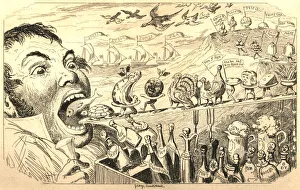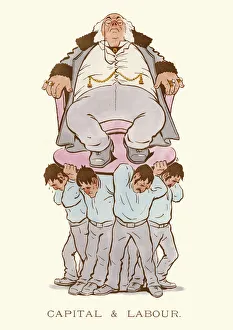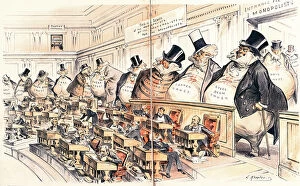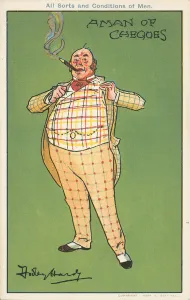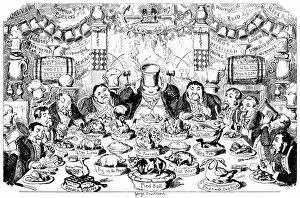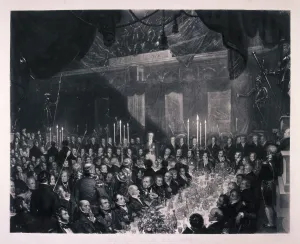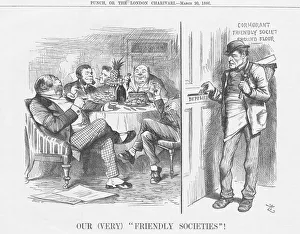Fat Cat Collection
In the realm of Victorian satire on capitalism and labor, a "fat cat" emerges as a symbol of excess and exploitation
All Professionally Made to Order for Quick Shipping
In the realm of Victorian satire on capitalism and labor, a "fat cat" emerges as a symbol of excess and exploitation. This term encapsulates the gluttonous nature of those who grow rich at the expense of underpaid workers they control. As Christmas approaches, one can't help but imagine these fat cats salivating over lavish feasts while their employees struggle to make ends meet. A vivid portrayal in a satirical cartoon titled "Public Charity" depicts William Henry Vanderbilt, Jay Gould, and Cyrus Field growing plump on the backs of their underprivileged workforce. The color lithograph captures the essence of their greed and highlights how capitalism enables such disparities. "The Capital and the Capitalist, " an impactful poster from 1925 by V. Polonski, further exposes this beast called capitalism that thrives on inequality. It emphasizes that true social justice can only be achieved when this monster is slain. Another illustration from L'Assiette Au Beurre magazine portrays capitalism as "The Beast. " In this image, it becomes evident that real social truth can only emerge once we rid ourselves of its oppressive grip. Meanwhile, an overworked clerk toils away tirelessly in another colorful lithograph titled "Hard At Work. " This depiction serves as a stark contrast to the fat cat's idle indulgence; it showcases how ordinary individuals bear the burden while capitalists reap excessive rewards. In yet another caricatured scene entitled "Fat Cat, " we witness a feline adorned with a monocle alongside other less favored pussies. This visual metaphor underscores how some thrive while others barely survive within our capitalist society. "The Bosses of the Senate, " an illustration featured in Puck magazine, reveals how wealthy elites exert control over political systems for personal gain. Their influence perpetuates income inequality and consolidates power into fewer hands. Lastly, there is "A man of cheques": a wealthy figure clad in a checked suit depicted through vibrant colors in a lithograph.

